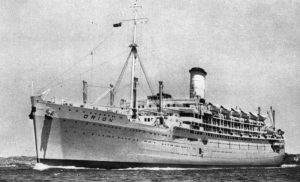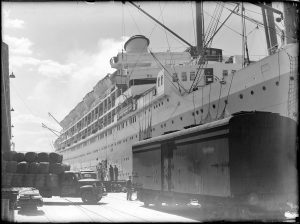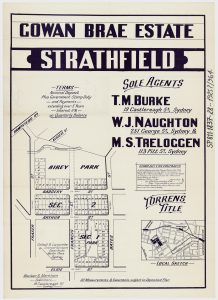Message in a Bottle

Orion. Courtesy State Library of Queensland
Have you ever dreamed of finding a message in a bottle? On 3 July 1939 Mr R.C. Chapman of Muston, SA discovered a bottle washed up at Flour Cask Bay on the south coast of Kangaroo Island, SA. In earlier days Flour Cask Bay had been the site of sealing and whaling operations. Inside the bottle he found a message from Arthur Ernest Arnold (Ernie), a clerk, of 47 Badgery Avenue Homebush.
The message read: ‘Orient liner Orion, November 16, 1938 – This bottle was thrown over 104 miles south-eat of Colombo. Would the finder please communicate with Mr A.E. Arnold, ‘Weiba’ 47 Badgery Avenue Homebush NSW.’[1]
Mr Arnold was delighted when Chapman returned the note to him in Homebush.
Ports.com estimates that the distance from the Port of Colombo, Sri Lanka to the Port of Adelaide is 5357 nautical miles.
RMS Orion was launched in 1934 and carried more than 500, 000 passengers before her retirement in 1963. She was built to accommodate 486 first-class, 653 tourist class passengers and 466 crew members.[2] Orion undertook voyages between Britain and Australia. But soon after Ernie Arnold’s message was discovered, Orion was requisitioned by the British government as a troopship. In early September she collided with HMS Revenge, whose steering had failed, sustaining significant damage. On 31 December 1941 as the Japanese army advanced on Singapore, the Orion was called upon to evacuate wounded troops and civilians from Singapore to Australia.[3]
The practice of sending messages in bottles may date as far back as 310 BC when Greek philosopher, Theophratus studied ocean currents.[4] Other scientific experiments were undertaken over the years but the practice was romanticised through the literature of Edgar Allan Poe and Charles Dickens during the 1800s.[5] In 1846 the United States Coast & Geodetic Survey department began releasing bottles to track currents. According to Jerry Penry’s article in The American Surveyor of March 2007 the estimated recovery rate of bottles is less than 3 per cent.[6] In reality it was vastly more likely that Ernie Arnold’s bottle would be forever lost to the waves and currents.

Orion at wharf. Courtesy State Archives of NSW

Gowan Brae Estate subdivision plant, 1923. Courtesy State Library of NSW
The Arnold family settled in a cottage on Lot 13 of Section 2 of the Gowan Brae Estate in Homebush during the mid 1920s. Arthur (senior), a fitter, and Ivy Pearl May Arnold had moved from Penshurst with their three children. Valuation records show that their cottage, Weiba in Badgery Avenue was owned by Ivy. Weiba was owned by the Arnold family for more than 50 years as Arthur (senior) died in 1974 and Ivy died in 1977. A newer house now occupies the site where Weiba once stood.
Ancestry.com records and family trees suggest that Arthur Ernest (Ernie) Arnold eventually settled in Perth with his wife, Margaret and family, dying in 1993.
By J J MacRitchie
Local Studies Advisor
References
[1] The Advertiser (Adelaide) 24 August 1939 p23 https://trove.nla.gov.au/newspaper/article/74431442[2] ‘RMS Orion’. Wikipedia https://en.wikipedia.org/wiki/RMS_Orion
[3] P & O Heritage Fact Sheet https://www.poheritage.com/Upload/Mimsy/Media/factsheet/94083ORION-1935pdf.pdf
[4] ‘Message in a Bottle’ Wikipedia https://en.wikipedia.org/wiki/Message_in_a_bottle#CITEREFEbbesmeyerScigliano2009
[5] ‘Message in a Bottle’ Wikipedia https://en.wikipedia.org/wiki/Message_in_a_bottle#CITEREFEbbesmeyerScigliano2009
[6] Penry, Jerry ‘Message in a Bottle’ in The American Surveyor March 2007 http://www.theamericansurveyor.com/PDF/TheAmericanSurveyor_Penry-MessageInABottle_March2007.pdf

1 Comment. Leave new
This is so fantastic!!
thank you so much for sharing this amazing history.